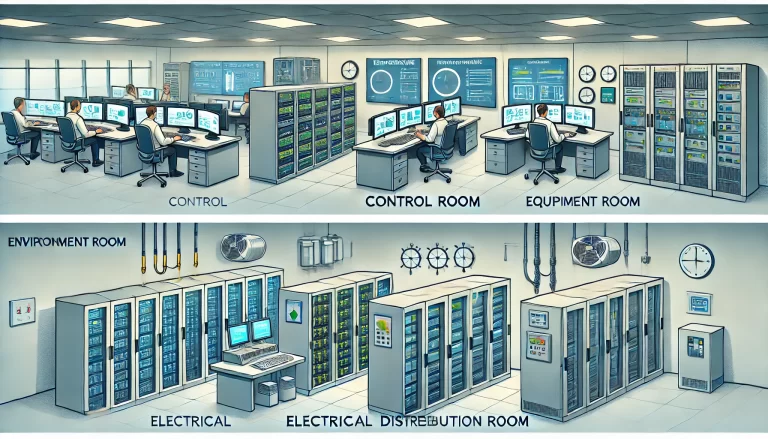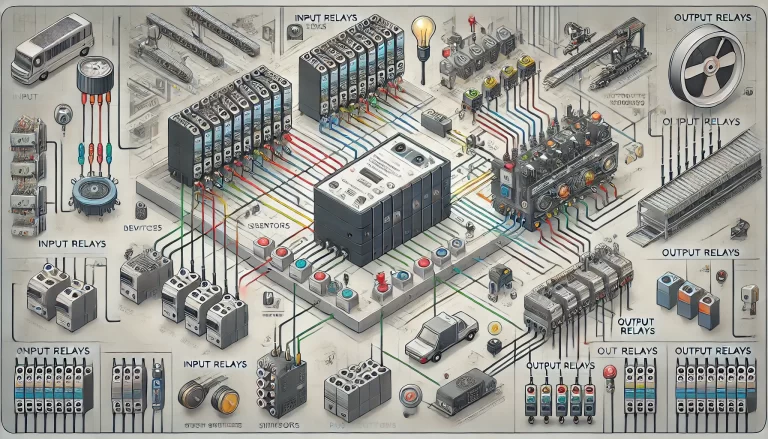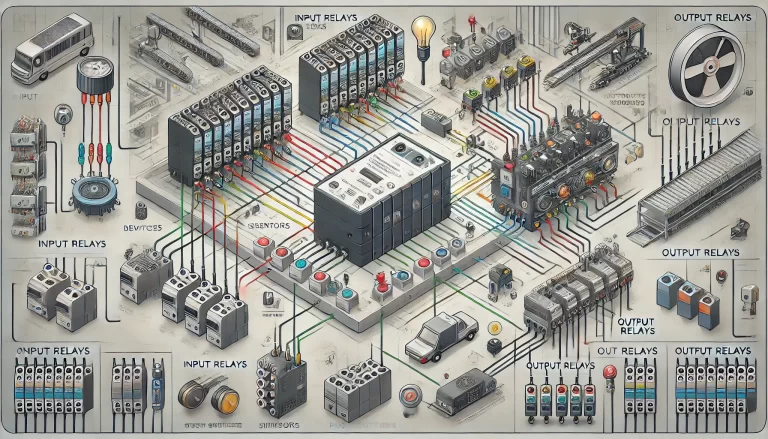In a Programmable Logic Controller (PLC), input and output relays play crucial roles in enabling the system to interact effectively with external devices and execute control tasks. This article provides a detailed explanation of the roles and functions of input and output relays, along with examples to illustrate their applications in industrial automation.

Input Relays
1. Receiving External Signals
Input relays are responsible for collecting signals from external devices such as sensors, push buttons, switches, and other field devices. These signals, typically in the form of electrical or physical states (e.g., ON/OFF), are converted into logical signals that the PLC can process.
Example: A proximity sensor on a conveyor belt detects the presence of an object. This detection generates an electrical signal that is transmitted to the PLC through the input relay.
2. Providing Logical Basis for Decision-Making
The state of input relays serves as the logical foundation for the PLC program to make decisions. The PLC uses these states to determine the appropriate control actions.
Example: A PLC program monitoring a temperature sensor uses the signal from the input relay to decide whether to activate a cooling system.
3. Debouncing and Signal Conditioning
Input relays often work with filters to ensure stable signal interpretation by the PLC. This prevents issues caused by signal noise or rapid signal fluctuations, such as the “bouncing” of a mechanical switch.

Output Relays
1. Driving External Devices
Output relays take the logical decisions processed by the PLC and convert them into electrical signals to control external devices such as contactors, relays, indicator lights, solenoid valves, or motors.
Example: When a machine completes a cycle, the PLC activates an output relay to turn on a green indicator light signaling that the process is complete.
2. Executing Control Actions
The state changes of output relays are used to execute predefined control tasks in an industrial process. This can involve switching devices on or off, adjusting parameters, or activating alarms.
Example: In an automated assembly line, the PLC may use output relays to control robotic arms for precise movement and placement of components.
3. Signal Amplification and Isolation
Output relays ensure that signals sent to external devices are strong enough to drive them. Additionally, they provide electrical isolation to protect the PLC’s internal circuitry from high-power external loads.
Integrated Role of Input and Output Relays
Input and output relays work in tandem to enable a PLC system to manage and control industrial processes effectively. For example:
Scenario: A factory automation system requires monitoring and control of conveyor belts, robotic arms, and safety mechanisms.
Input Relays: Collect signals from sensors on the conveyor belt to detect the position of materials.
Output Relays: Actuate the motors driving the conveyor belt and trigger alarms if a safety issue is detected.
Scenario: In a water treatment plant:
Input Relays: Receive signals from level sensors indicating the water level in tanks.
Output Relays: Activate pumps or open valves to regulate water flow.

Enhancing Understanding with a Diagram
A simple diagram could illustrate the interaction between input relays, the PLC, and output relays:
Input Side: Sensors, switches, and other devices connect to input relays.
PLC Core: Processes signals from input relays based on programmed logic.
Output Side: Relays send signals to external devices like actuators, alarms, or lights.
This visualization helps bridge the gap between theoretical concepts and real-world applications.

Conclusion
Input and output relays are fundamental components of PLC systems. They enable the PLC to interface with external environments, facilitating automation, control, and monitoring in industrial applications. By converting physical signals into logical ones and vice versa, these relays ensure seamless communication between the PLC and the machinery it controls. Understanding their roles in detail allows engineers to design more efficient and reliable control systems.
